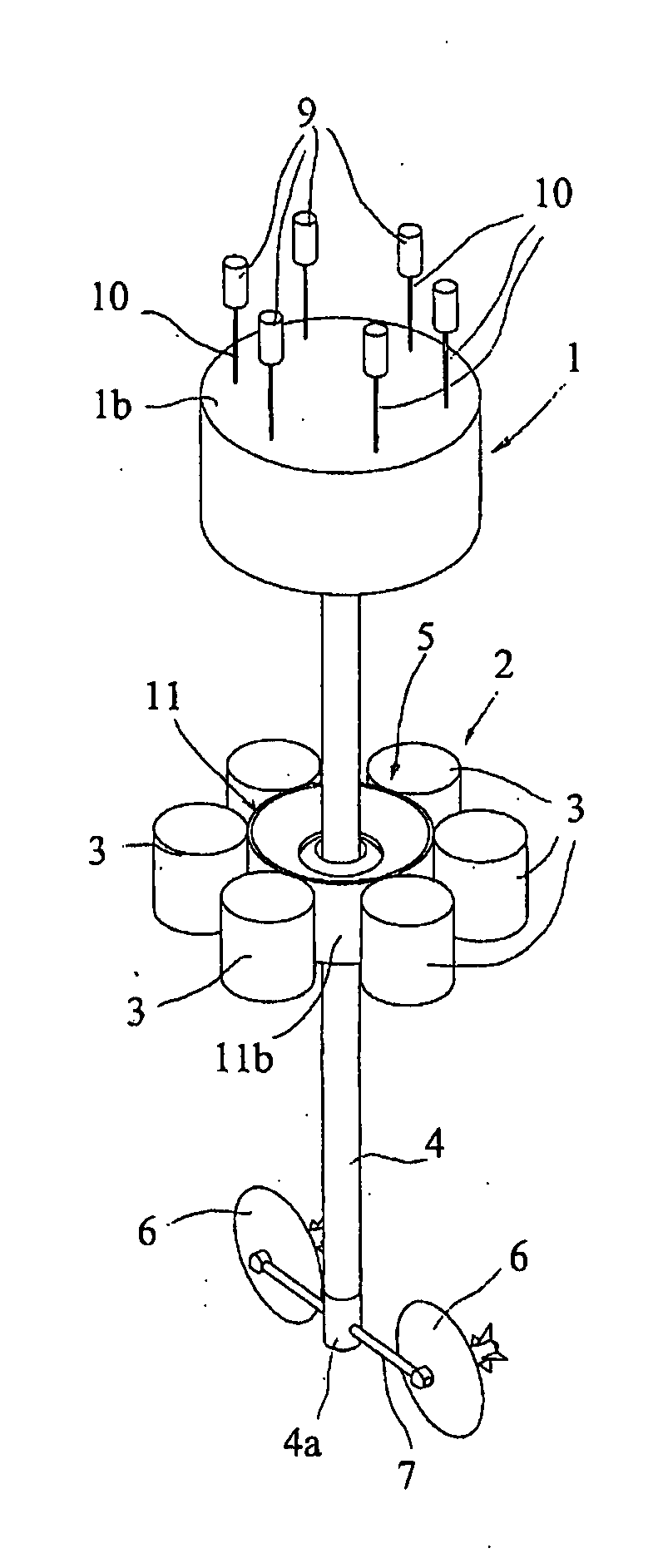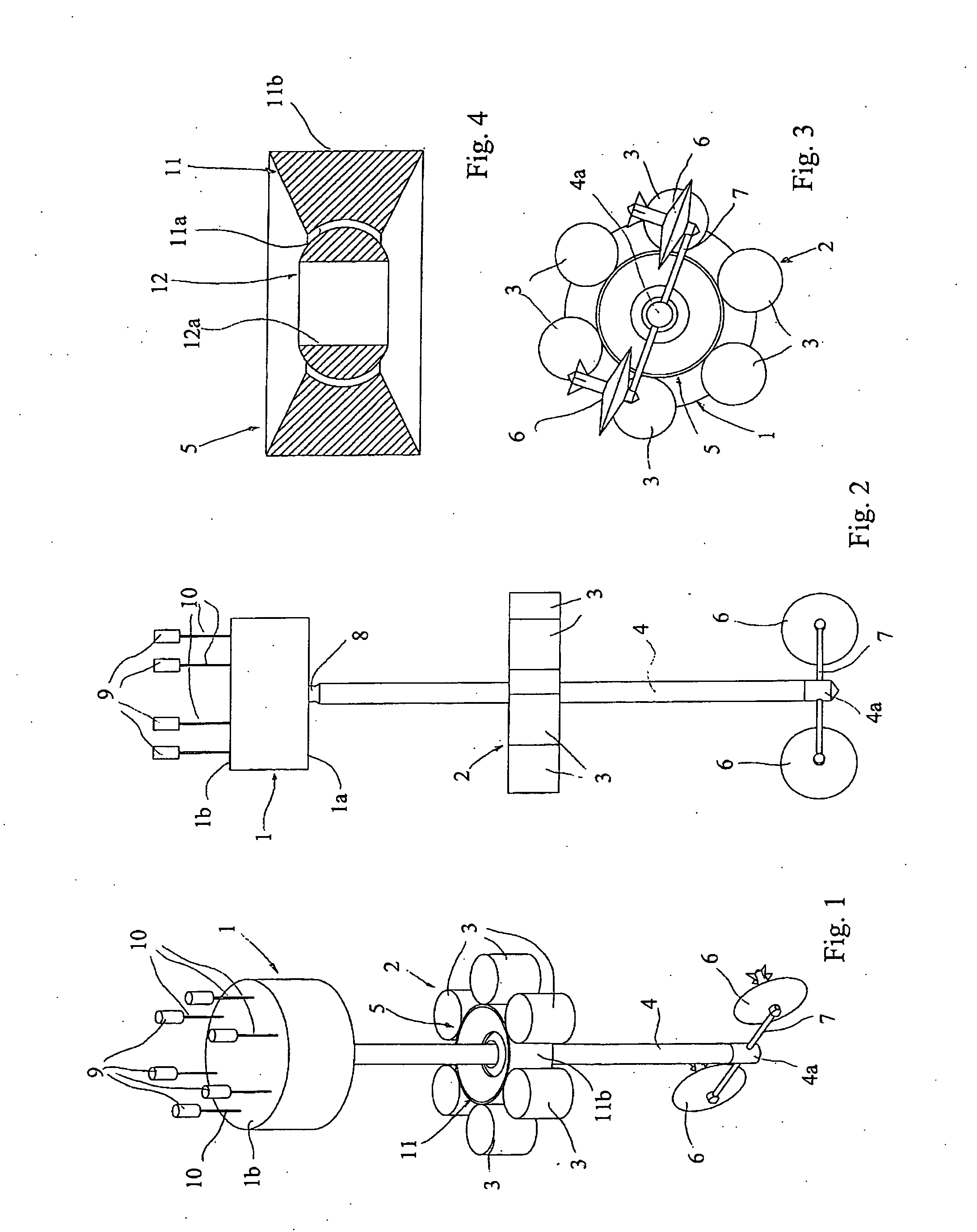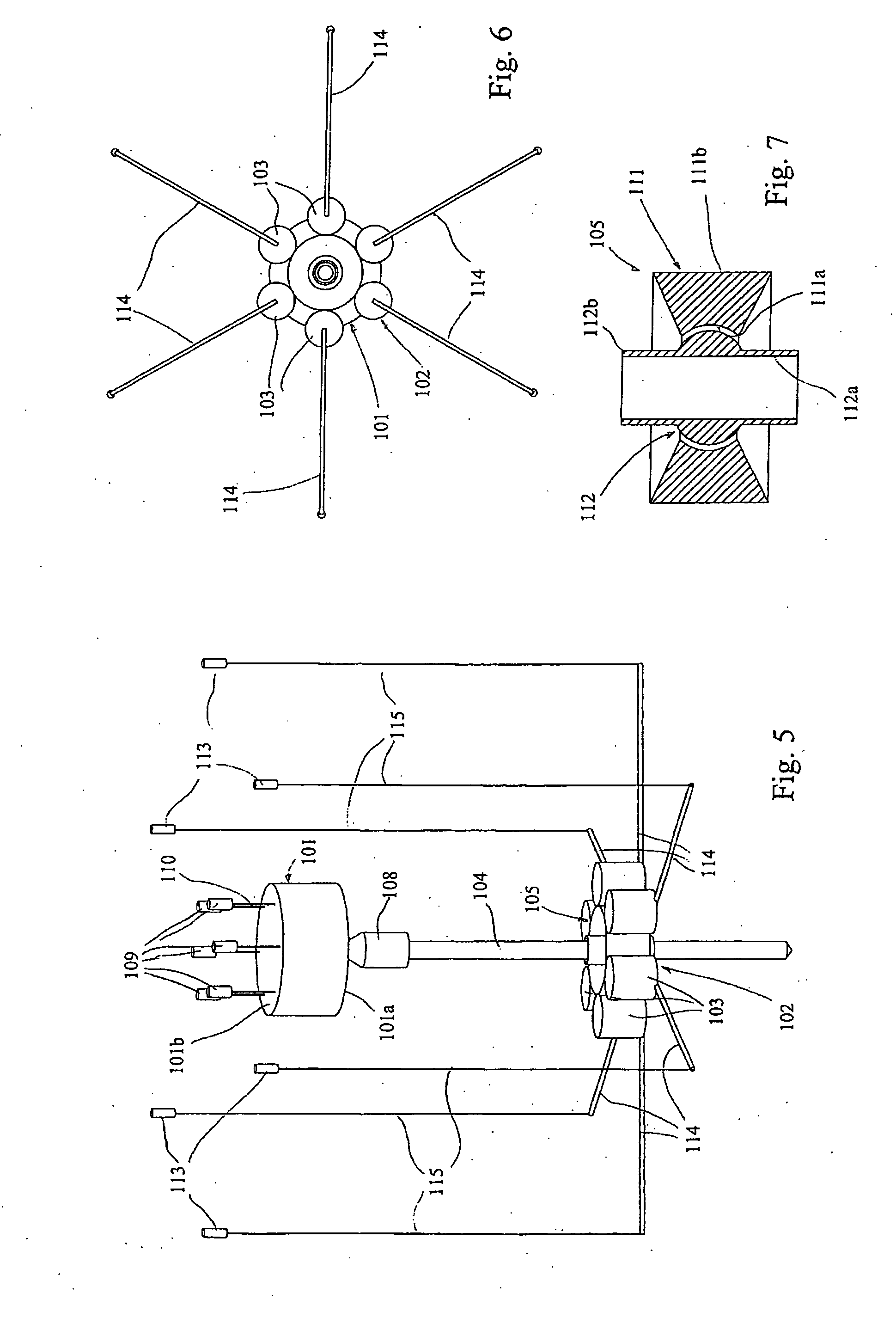Completely submerged wave energy converter
a wave energy converter, completely submerged technology, applied in the direction of electric generator control, machines/engines, mechanical equipment, etc., can solve the problems of low efficiency, high cost of maintenance, use and diffusion of wave energy converters, etc., and achieve the effect of satisfying the resistance to extremes
- Summary
- Abstract
- Description
- Claims
- Application Information
AI Technical Summary
Benefits of technology
Problems solved by technology
Method used
Image
Examples
first embodiment
[0033]With reference to FIGS. 1 to 4, the improved wave energy converter according to the invention comprises the following main parts: an upper submerged member 1 (e.g. a cylindrical tank containing mainly water and air, with inertial mass as low as possible); a lower submerged member 2, e.g. comprising six smaller cylindrical tanks 3 containing mainly water and air, rigidly linked together in a circular configuration around a generally cylindrical, central linking piece 5; a pole 4 extending between the upper member 1 and the lower member 2 along the common axis thereof, projecting beyond the lower member 2 and internally provided with an appropriate counterweight system (not shown), at some point along its length corresponding to the average position of the lower submerged member 2; and two turbines 6 mounted on respective ends of a transversal rod 7, integrally and orthogonally crossing the pole 4 in correspondence with the free, lower end thereof.
[0034]The pole can also take th...
second embodiment
[0046]Under a complete wave cycle, the resultant of the forces exerted on the lower submerged member 2 will be approximately vertical and will depend only on the energy and shape of the waves affecting the apparatus. Therefore, in order to keep the lower member 2 at a constant average position, it will be sufficient to have a control system which considers its average position after many wave cycles, and the interventions will be incremental and small compared to the energy of the waves acting on the apparatus. In particular, if the shape and energy of the waves remain constant for a while, the apparatus will reach equilibrium and no further interventions will be needed to stabilize the lower member 2. The control system may be a static device of the kind of the buoyancy elements 9 (see the second embodiment described further on) or even simply consisting of variable buoyancy devices driven by a computerized control device.
[0047]The length of the pole 4 for an oceanic apparatus coul...
third embodiment
[0057]A further alternative is to connect the upper and lower submerged members via an extensible pole, of the type described further on for a third embodiment, provided with energy extraction systems that exploit the reciprocating extension and contraction movement of the pole. In this way, one can get rid of the energy extraction devices in the linking piece 105 itself, and the pole 104 can end in the linking piece instead of passing through and beyond it. This makes the apparatus more compact, though with the drawback of a more complex structure of the pole. Under exceptionally big waves the whole apparatus will move, as in this case also the lower member will be interested by the wave action. This reduces the possibility of a motion capable of disassembling the apparatus.
[0058]In any case, a possible separation of the two parts will not be destructive, and the apparatus can afterwards be reassembled by letting the pole go back through its housing in the linking piece (or connect...
PUM
 Login to View More
Login to View More Abstract
Description
Claims
Application Information
 Login to View More
Login to View More - R&D
- Intellectual Property
- Life Sciences
- Materials
- Tech Scout
- Unparalleled Data Quality
- Higher Quality Content
- 60% Fewer Hallucinations
Browse by: Latest US Patents, China's latest patents, Technical Efficacy Thesaurus, Application Domain, Technology Topic, Popular Technical Reports.
© 2025 PatSnap. All rights reserved.Legal|Privacy policy|Modern Slavery Act Transparency Statement|Sitemap|About US| Contact US: help@patsnap.com



